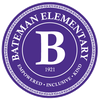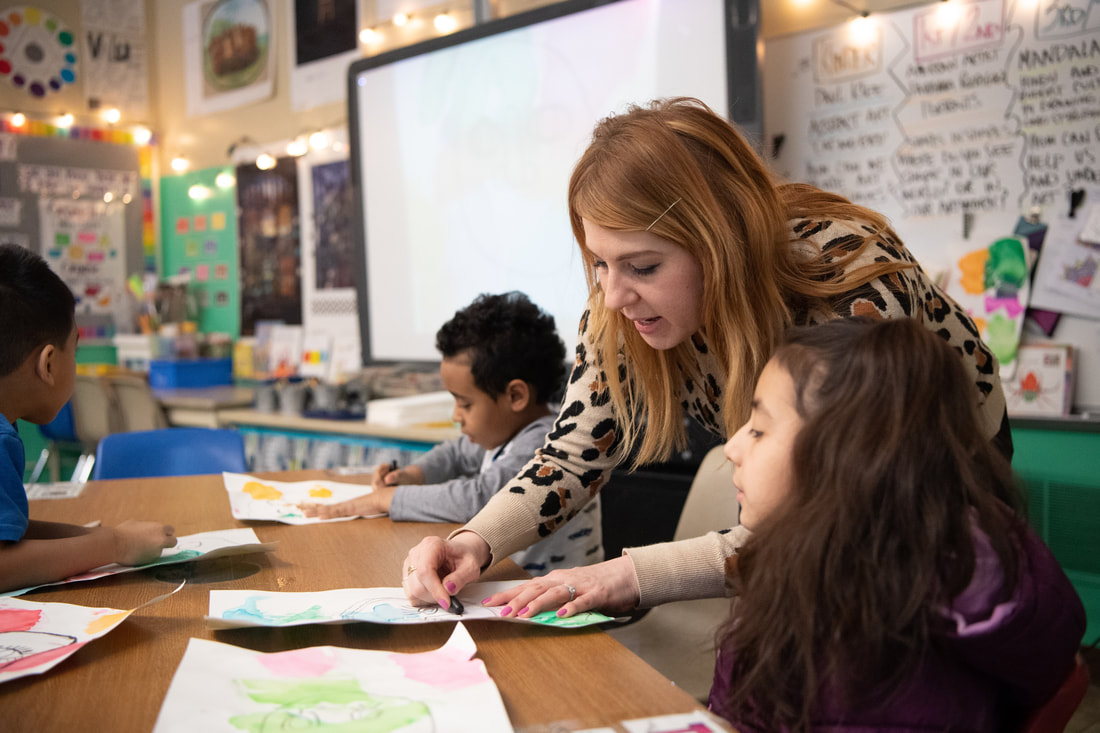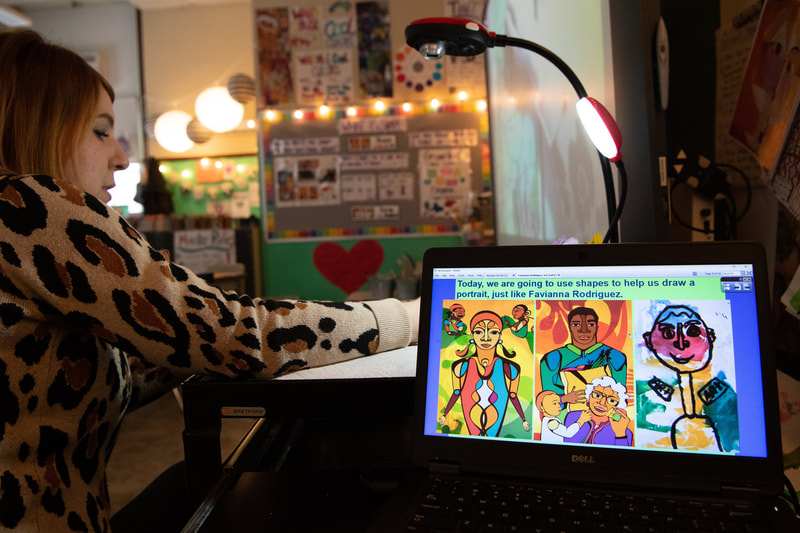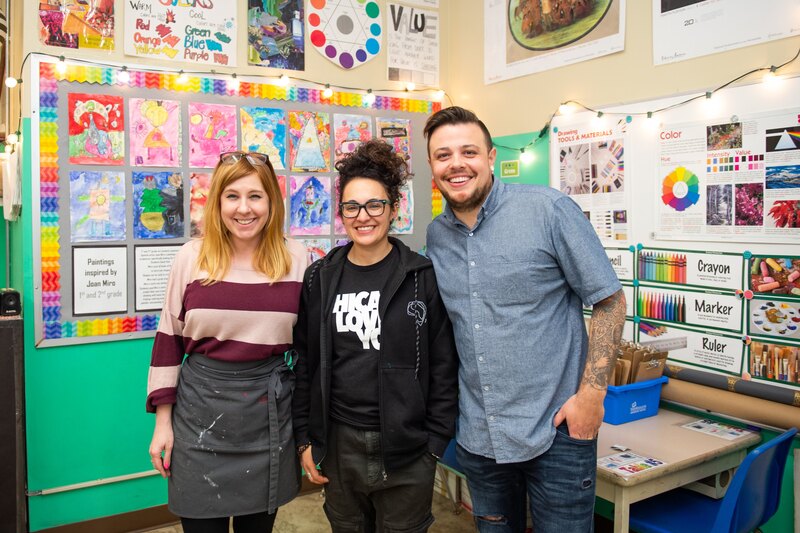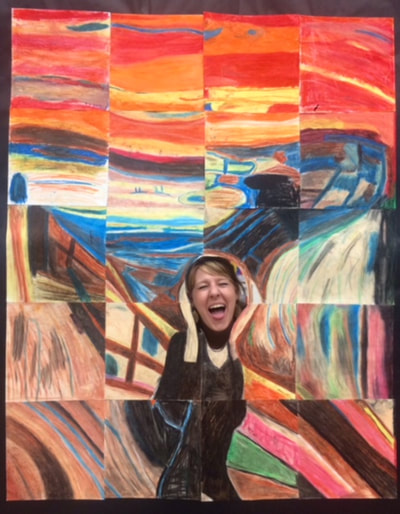Kate ChrismanVisual Arts (PreK-3rd grade)Hello! My name is Kate Chrisman and I teach visual art at Bateman.
I love working with my students very much, and watching them learn through art. My career as an art teacher guarantees that we get to experiment, learn new things together, inspire each other, and have fun every day! I grew up in Chicago and the western suburbs, and I graduated from The School of the Art Institute of Chicago in 2006. I earned a Bachelors of Art with an emphasis in printmaking and have a minor in Art Education. I have been teaching for 17 years; 7 years teaching K-8th art at Bridge Elementary, and the past 10 years at Bateman. When I am not washing paint brushes and refilling glue bottles, you can find me walking my dog Hank, running after my 1 year old daughter, exploring new places, and creating my own artwork. [email protected] |
Update! We have moved! We are now located on the second floor across from the library in room 228.
Updated pictures of our new space COMING SOON!
ART ROOM 100
PARDON OUR MESS, MASTERPIECES IN PROGRESS!
Art room 100 is a very unique space, located just to the left of our auditorium. Our studio space is broken into two areas; our classroom environment, and a small alcove outside of the classroom with is referred to as the 'free choice' area.
A typical day in art room 100 starts with reviewing our learning from the week before, and discussing how we will apply or jump off of it in our new lesson. We recognize that students bring varied talents into the classroom and learn in different ways. Art room 100's learning model builds tasks into each lesson which allow students to interact with content in ways that fit their strengths and learning styles. An example of learning a lesson may include using kinetic movement to learn vocabulary words, looking at a projected work of art on the smart-board and using an interactive pen to find and trace shapes, watching short educational videos about an artist, completing 'mini art critique' worksheets, dramatic re-enactments of a painting, or working as a group to build an object or scene.
Some art media may seem daunting to students at first, however we like to break them down into attainable objectives for each class period to insure that students never feel overwhelmed. Once students have completed their work for the day, they have choice based learning time. Choice based time allows students to experiment freely with materials and create their own artwork. During choice based learning time, student artists may practice fine motor skills or engage in imaginative play. A few of the many options include choosing to build with Legos, constructing patterns with perler beads, studying a 'how to' drawing book, manipulating cardboard and construction paper, or curling up with a book and taking a little break.
Updated pictures of our new space COMING SOON!
ART ROOM 100
PARDON OUR MESS, MASTERPIECES IN PROGRESS!
Art room 100 is a very unique space, located just to the left of our auditorium. Our studio space is broken into two areas; our classroom environment, and a small alcove outside of the classroom with is referred to as the 'free choice' area.
A typical day in art room 100 starts with reviewing our learning from the week before, and discussing how we will apply or jump off of it in our new lesson. We recognize that students bring varied talents into the classroom and learn in different ways. Art room 100's learning model builds tasks into each lesson which allow students to interact with content in ways that fit their strengths and learning styles. An example of learning a lesson may include using kinetic movement to learn vocabulary words, looking at a projected work of art on the smart-board and using an interactive pen to find and trace shapes, watching short educational videos about an artist, completing 'mini art critique' worksheets, dramatic re-enactments of a painting, or working as a group to build an object or scene.
Some art media may seem daunting to students at first, however we like to break them down into attainable objectives for each class period to insure that students never feel overwhelmed. Once students have completed their work for the day, they have choice based learning time. Choice based time allows students to experiment freely with materials and create their own artwork. During choice based learning time, student artists may practice fine motor skills or engage in imaginative play. A few of the many options include choosing to build with Legos, constructing patterns with perler beads, studying a 'how to' drawing book, manipulating cardboard and construction paper, or curling up with a book and taking a little break.
